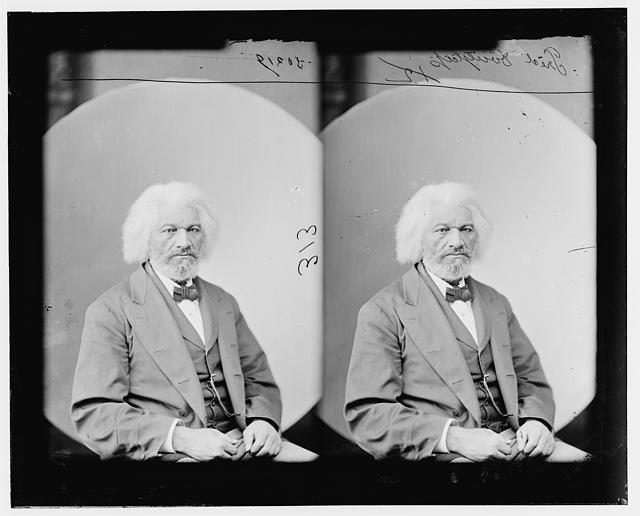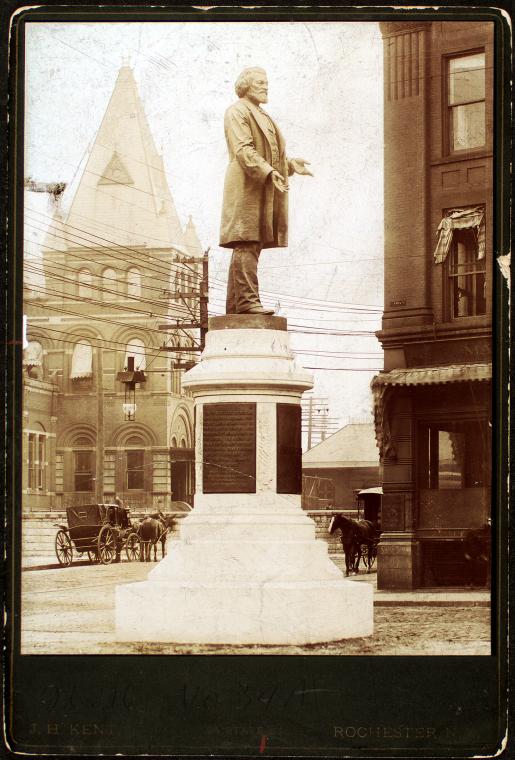Teach This Poem, though developed with a classroom in mind, can be easily adapted for remote learning, hybrid learning models, or in-person classes. Please see our suggestions for how to adapt this lesson for remote or blended learning. We have also noted suggestions when applicable and will continue to add to these suggestions online.
Look closely at this image of Frederick Douglass.
Look closely at this statue of Frederick Douglass.
The following activities and questions are designed to help your students use their noticing skills to move through the poem and develop their thinking about its meaning with confidence, using what they’ve noticed as evidence for their interpretations. Read more about the framework upon which these activities are based.
-
Warm-up: Free-write or draw for three to five minutes about any or all of these words: freedom, liberty, dream(s). After, share your free-writing or drawing with your classmates.
-
Before Reading the Poem: Look closely at the image of Frederick Douglass. What do you notice? What stands out to you? Look again. What else do you notice? Then, look closely at the statue of Frederick Douglass. What do you notice? What stands out to you? Look again. What else do you notice?
-
Reading the Poem: Read the poem “Frederick Douglass” by Robert Hayden silently. What do you notice about the poem? Annotate for any words or phrases that stand out to you or any questions you might have.
-
Listening to the Poem (enlist two volunteers to read the poem aloud): Listen as the poem is read aloud twice, and write down any additional words and phrases that stand out to you. Or, you may opt to listen to the poet read the poem.
-
Small-group Discussion: Share what you noticed in the poem with a small group of students. Based on the details you just shared with your small group and your activities from the beginning of class, how do you think the poem explores freedom and liberty? How does the speaker describe Douglass? What does it mean to honor someone who has come before us?
-
Whole-class Discussion: (Teachers, if you feel that your students might want more context, have them read more about Douglass.) How might Douglass envision the world? What is his “dream of the beautiful, needful thing”? How might Douglass’s life and work as an abolitionist relate to present day abolitionists?
-
Extension for Grades 7-8: In honor of Black History Month, continue researching and reading Black poets. Choose a poem to memorize and recite for your classmates. Or, write your own poem celebrating a Black abolitionist, artist, or scholar.
-
Extension for Grades 9-12: Continue reading Douglass’s work. Here is an excerpt from My Bondage and My Freedom, and here is his speech “What to the Slave is the Fourth of July.” Create a list of discussion questions and participate in a socratic seminar in which you drive the discussion.
Robert Hayden first published “Frederick Douglass” in The Atlantic on the fiftieth anniversary of Douglass’s death. See the poem in its original context.
This week’s poetic term is sonnet, referring to a fourteen-line poem traditionally written in iambic pentameter. Read more.


